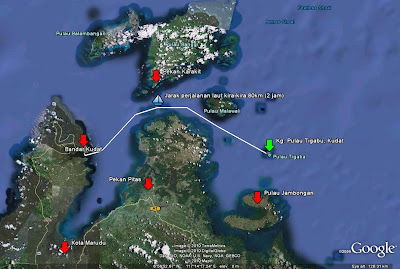Tun Mustapha Park Expedition (TMPE) 2012
 |
Group photo of marine scientists embarked in the expedition during the TMPE 2012 Press Conference in UMS
©
WWF-Malaysia/Eric Madeja
|
The Tun
Mustapha Park Expedition (TMPE) assessed aspects of marine biodiversity and
ecology, as well as the socioeconomic benefits of the marine ecosystems to
local communities in the proposed park. As signatory to the Coral Triangle
Initiative (CTI), Malaysia Malaysia
The expedition
was jointly led by Mr. Muhammad Ali Syed Hussein, Leader of the UMS team; Dr.
Bert Hoeksema of Naturalis Biodiveristy Center ,
Leader of the Coral Reef Biodiversity Team; and Ms. Bobita Ahad of
WWF-Malaysia, Leader of the Coral Reef Status Team. Other expedition
participants include marine scientists from UMS, Universiti Malaya, University of Queensland ,
Naturalis Biodiversity
Center and researchers from Sabah
Parks.
YB Datuk Dr
Maximus Ongkili of the Ministry of Science, Technology and Innovation (MOSTI)
launched the expedition in Kudat on 6 September. He stressed the importance of
the expedition to the gazettement of the proposed park during the launch of
expedition.
After enduring
20 days of sailing, some with rough seas, preliminary results of the expedition
were announced at a press conference at the UMS campus in Kota Kinabalu on 27
September 2012. The expedition outcomes presented diverse coral families;
namely, 38 species of Fungiidae, 28 species of Agriciidae, 14 species of
Euphyliidae, 430 species of reef fish, 25 species of Ovulidae snails and 130
species of macroalgae. Certain species of fish and coral are found to be under
threat due to human activities such as fish bombing and overfishing.
 |
Coral reefs in the proposed TMP © WWF-Malaysia/Eric Madeja
|
Leader of Reef Check team, Ms. Bobita reported that
the coral reefs are in fair to good condition. They laid a total of 55 transects and assessed absence and presence of indicator fish and invertebrate
species, substrates and coral damages using a modified Reef Check method.
 |
| Scientists at work: Sancia van der Meij and Bastian Reijnen from Naturalis Biodiversity Center took photos of their processed sampels. © WWF-Malaysia/Eric Madeja |
 |
| Scientists at work: Asri Barail and Yusof Bural, Reef Check team members laying transect at the selected sites before the survey.© WWF-Malaysia/Robecca Jumin |
"The
communities within the proposed TMP are very dependent on the marine environment
for livelihood and they have confirmed that this area is important. Therefore,
we need to actually do something to manage the area." said Robecca Jumin,
Manager of Sulu-Sulawesi Marine Ecoregion (SSME) of WWF-Malaysia at the open
forum during the press conference.
Dr. Bert
Hoeksema of Naturalis
Biodiversity Center
Professor Dr
Saleem Mustafa, Director of Borneo Marine Research Institute (UMS) urged for
the linking of marine protected areas with the Ecosystem Approach to Fisheries
Management (EAFM) at the proposed TMP. He added that this would convince the
coastal communities of the merits of conservation intervention.
“The marine park,
covering an area of 1.02 million hectares, if protected, will help the
conservation of marine biodiversity and promote sustainable development of
fisheries that provide livelihoods to the coastal communities,” said UMS
vice-chancellor Professor Dr Mohd Harun Abdullah in his speech delivered by UMS
Deputy Vice Chancellor Professor Dr Shahril Yusof.
The expedition
was organised by Universiti Malaysia Sabah (UMS), Naturalis
Biodiversity Center ,
Sabah Parks
Watch videos of the expedition at:
YouTube: http://www.youtube.com/user/TMPE2012
Or at Naturalis blog site: http://blog.naturalis.nl/?p=7347
By: Liew Hui Ling, Communications Officer, Marine Programme



Comments
Post a Comment